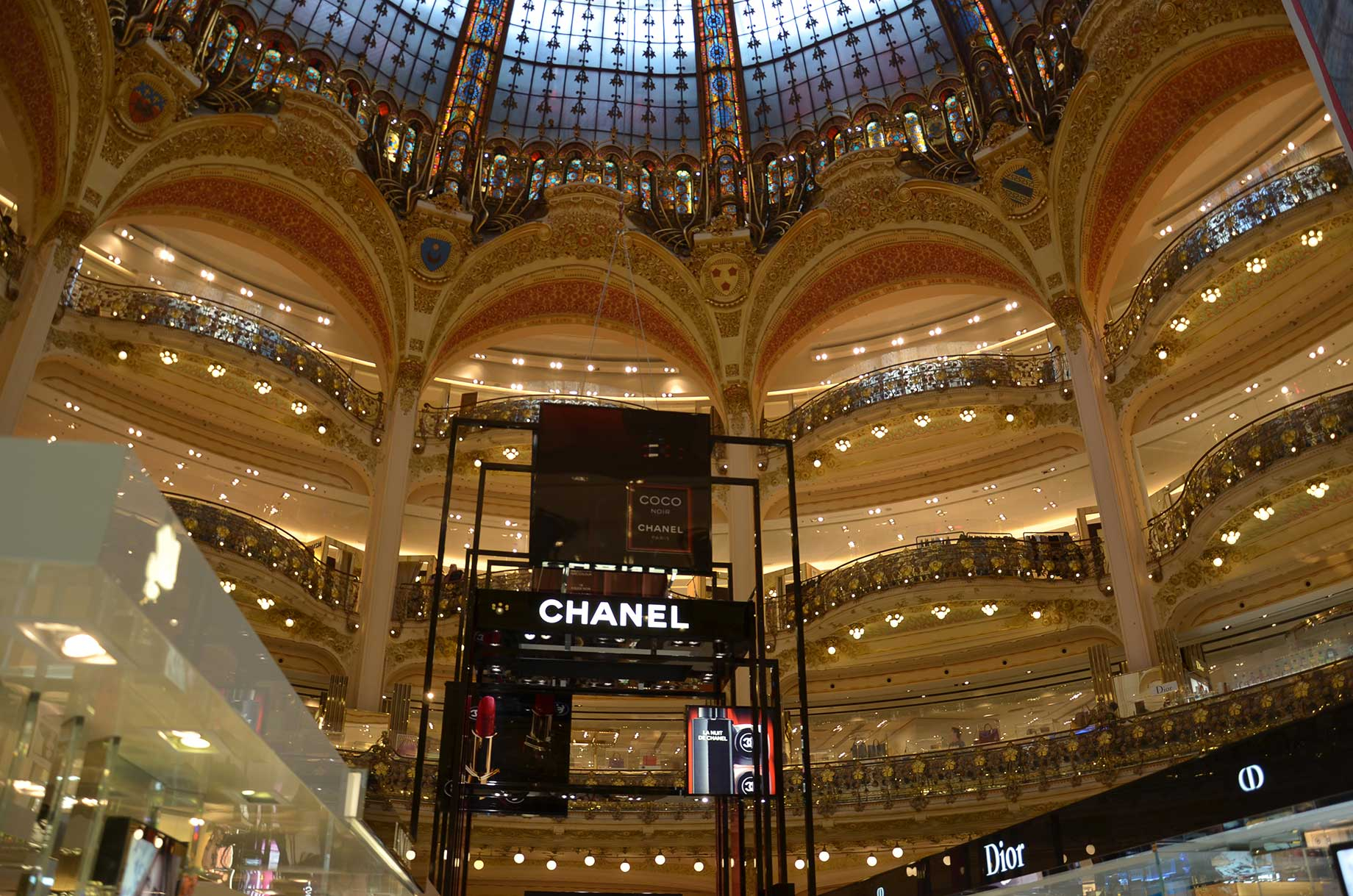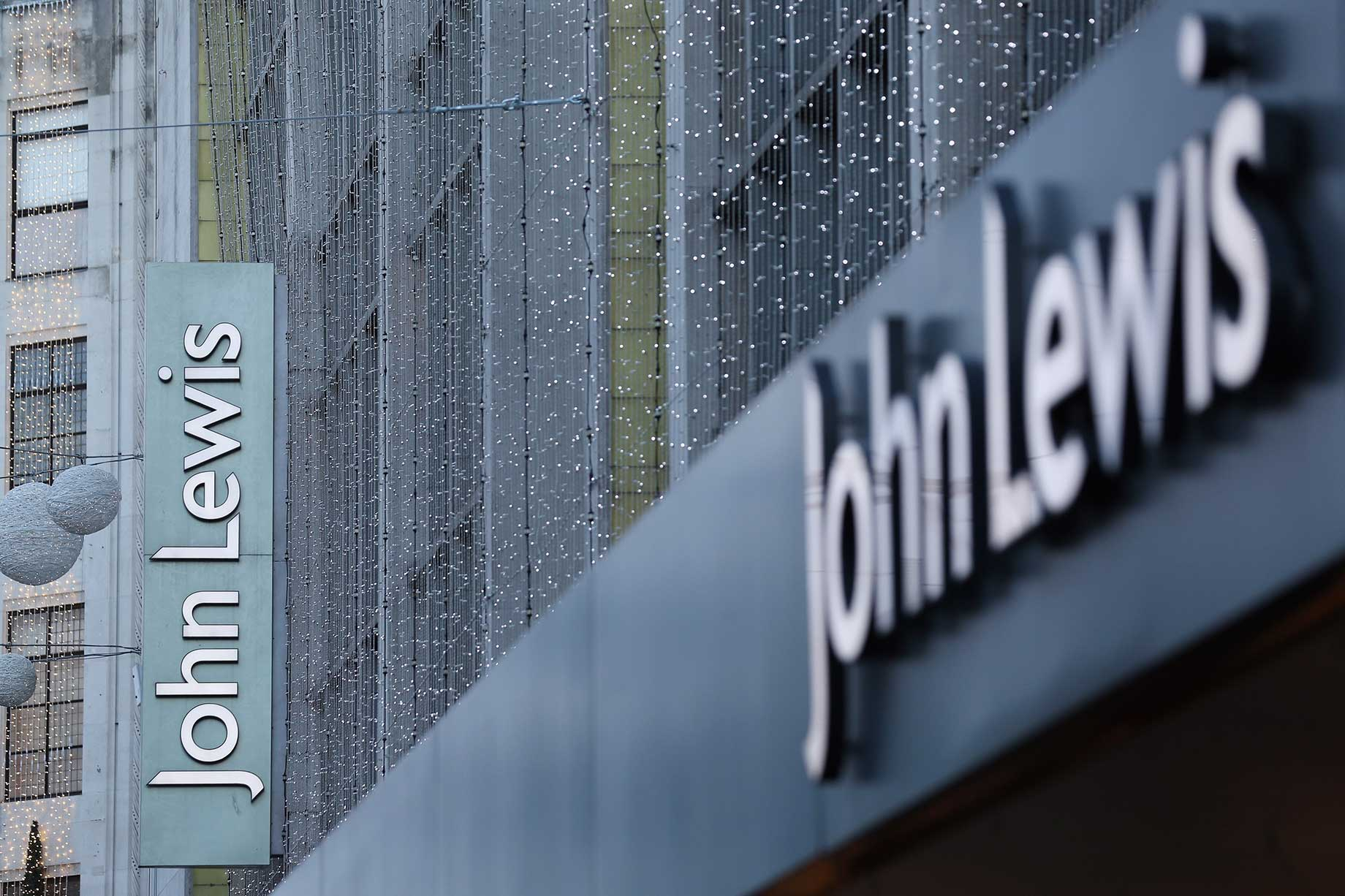Though Europe’s department stores have come under competitive pressure in recent years, they have fared considerably better than their U.S. counterparts and are well positioned to profit in the future, according to an ICSC report.
U.S. department store sales shrank by 26.3 percent over the past five years and are projected to decline by a further 29.7 percent over the next five, says Euromonitor International data that are cited in the report. Western Europe’s department stores, by contrast, sustained only a 4.6 percent decline in sales over those previous five years, and this is projected to ease to only a 3 percent drop over the next five. (The full report may be viewed here.)

Galeries Lafayette, Paris
Department stores face several challenges, including competition from supermarkets, variety stores and such fast-fashion retailers as H&M, Uniqlo and Zara. Moreover, it has been difficult for them to meet the demands of a broad demographic customer base, according to the report, titled Thinking Outside the Box: Reimagining the Traditional Department Store Concept in Europe.
But Europe’s department stores enjoy several advantages over their U.S. counterparts. Among those advantages is that, for the former, a more restrictive city- and town-planning system has helped curtail retail development, resulting in less competition for existing retailers. Moreover, larger shopping centers in Europe are commonly anchored by supermarkets, reducing reliance on department stores. (The single exception is in Britain, where department stores do anchor such centers, but those are strong performers, such as John Lewis, that have successfully embraced omni-channel retail.)

John Lewis, London
Neither has it hurt that many of Europe’s department stores — such as Harrods and Selfridges, in London; and Galeries Lafayette, in Paris — are important cultural institutions, the report points out.
So while U.S. department store chains have been shedding stores in recent years, some of the European chains have been opening new ones.
“Europe’s department stores have many things going for them and are in a good position to capitalize on several trends,” said Sarah Cole, ICSC's manager of international research, the report’s author.

El Corte Inglés
Those stores are convenient, one-stop locations for customers seeking a variety of merchandise, and they are proving popular with click-and-collect customers — those who like to order online for pickup in-store. “As a result, retailers, such as John Lewis, House of Fraser and El Corte Inglés, have invested heavily in their digital capabilities,” the report notes.
The plethora of space inside department stores yields yet another advantage when it comes to providing shopper experiences, the report says. “Like shopping centers, department stores are diversifying their offer to provide a range of services, including food-and-beverage, health and wellbeing, and other personal services,” it says. The newly opened John Lewis store at Westgate Oxford (U.K.) offers nearly two dozen services, including personal styling, beauty treatments and a home-design service — as well as a rooftop Scandinavian restaurant.

Selfridges
But to really thrive, department stores must maintain the highest standards of product and service, as their core higher-income patrons expect. The stores must embrace technologies that enable them to know the customer better, to anticipate the needs and to develop a personal relationship with him or her, the report says.
“At the end of the day,” concludes the report, “department stores should not forget that their long-term advantage — a large, well-located ‘playing field’ — gives them more options than ever.”
By Edmund Mander
Director, Editor-In-Chief/SCT


